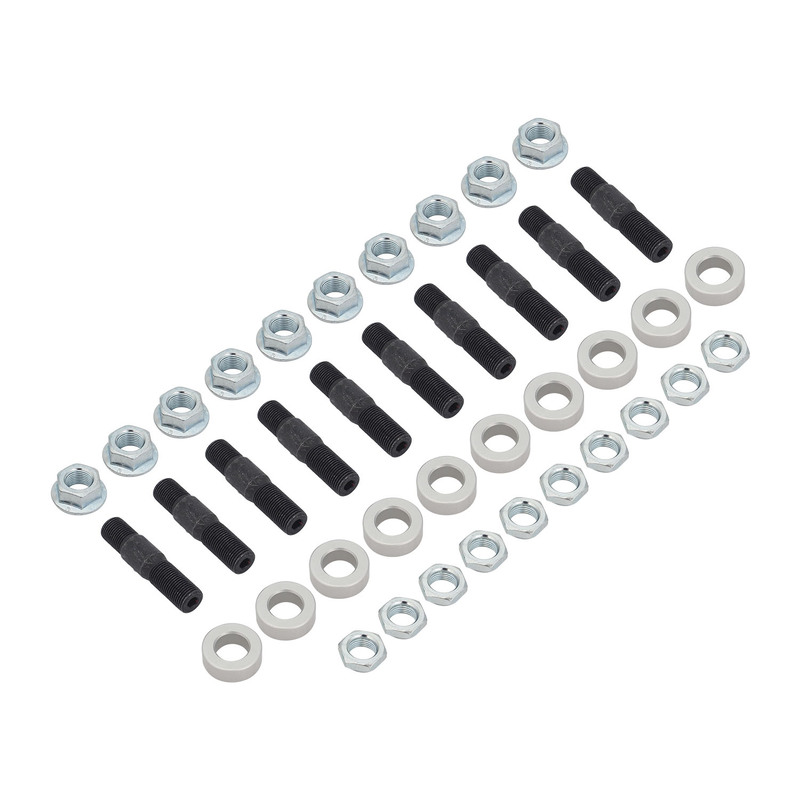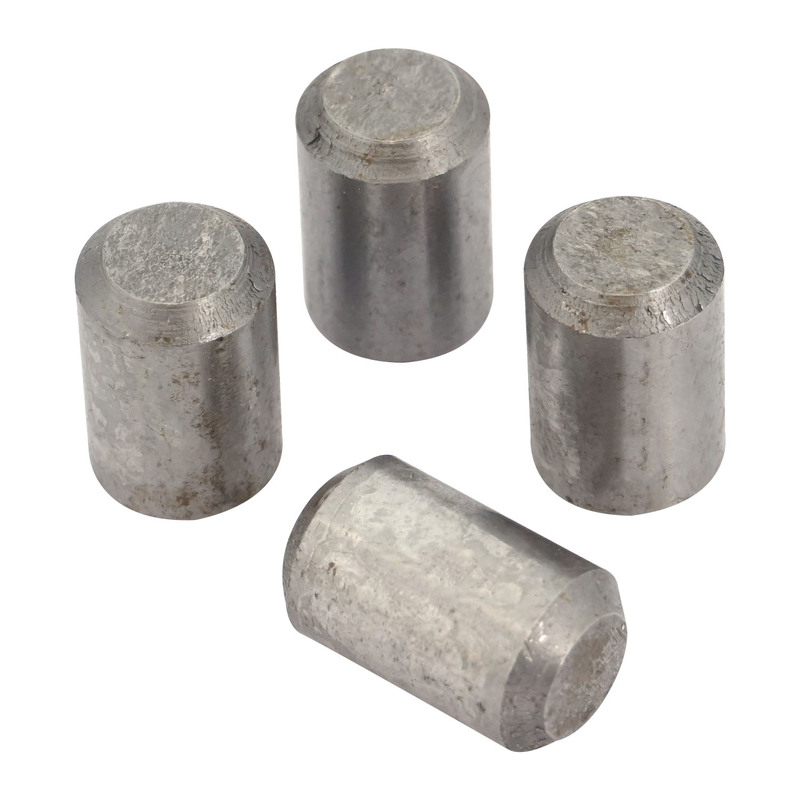The Story of the Model T Ford
In a world where we largely take cars for granted and accept innovation as the norm, it is extremely difficult to comprehend the impact of the Model T Ford in 1908. Henry Ford had built nine previous models and there was little indication that number ten would have such a profound effect on a fledgling industry. The Model T or "Tin Lizzie" as it affectionately became known was to dominate the American 'carscape' for the next 18 years and in that time taught the motor industry how to manufacture its cars and methods of assembly that were to endure into the 1980s.
Design team:
Work on the Model T commenced in 1906, with four key players in its creation. The team was headed up by Henry Ford himself, assisted by Chide Harold Wills, a metallurgy specialist, Joseph Galamb and Ed 'Spider' Huff. They occupied a small room on the third floor of the factory, containing a blackboard on which Ford jotted down his thoughts. Next door was a larger room, that was big enough to take a chassis. It was here that the first prototype was built. Ford wanted to build a car that was lightweight, using new vanadium steel. It had proved itself on the Model N and is credited with introducing the alloy to the American motor industry. Ford would visit the design team every day, thinking up ideas, which the team then interpreted. The actual plans were drawn up by Galamb.
Ford had his office next to the experimental room and actually insisted on testing the early models himself. The work took two years and was finalised by the beginning of 1908. An un-numbered preproduction car was completed on the 24th September 1908, with the actual number one Model T finished three days later on the 27th. Ford tested the prototype on a 2,183km hunting trip to northern Wisconsin, averaging 20 mph (32km/h) and performed with great reliability. The Model T was officially introduced on October 1 as a 1909 model. A number of Model T were built in the remainder of 1908, with a number shipped to motor shows in the US and Europe.
The Model T:
While the Model T is generally portrayed as the 'people's car' it was not initially particulalry cheap, with the open bodied version priced at $850, $100 more than the Model R. Utility, not beauty was the Model T's hallmark, with a compact narrow body and high ground clearance. It was built on a 100 inch (2540mm) wheelbase and was initially offered with a choice of Touring and three-seat Runabout. They were priced at $850 and $825 respectively, though prices were to fall. Only four wheels and tyres were supplied and there was no provision for carrying a spare.
However they did get a horn, three oil lamps and top attachment irons. Commencing in 1909, body choice expanded to include a closed coupe two door Landaulet with fabric rear roof section and taxi version called the"Taximeter"; a more formal sedan like model called the Town Car, with fully enclosed rear doors dubbed the "Tourster". Today the idea of multi body styles designed for a single chassis is taken for granted, but it wasn't in 1908, with the industry greeting this development with some scepticism. The same chassis was used on all models. The 100 inch wheelbase chassis employed a beam axle and transverse leaf spring at the front and the same arrangement at the rear.
It was the five seater Touring Car that was most popular, appealed most to the family man. The two seater Runabout was also popular, but the closed bodied versions (the Town Car, the Landaulette and the Coupe) sold in much smaller numbers. The same chassis was used on all models. The 100 inch wheelbase chassis employed a beam axle and transverse leaf spring at the front and the same arrangement at the rear. The key to driving any Model T was Ford's patented planetary transmission, built in unit with the engine.
A ball and socket joint at the tail end of the transmission housing received the front ball front of the driveshaft and took the driving thrust from the rear wheel bearings. Except on the first 2,500 cars built, the transmission was controlled by three numbered pedals - "C", "R", and "B" - presumably to prevent novices from forgetting pedal "C" - clutch, pedal "R" - reverse and pedal "B" - brake. The clutch worked a band inside the transmission that engaged one of the two forward speeds. Pedal "R" connected to a similar reverse band. Pedal; "B" - brake operated a brake band that stopped the driveshaft from rotating, thus more or less halting the car. Other new features of the Model T were that its steering wheel was on the left, a move that other manufacturers eventually followed.
The three point engine mounting also proved a great idea, avoiding the distortion of the engine base common with two point engine mounting. Another useful innovation was the detachable cylinder head. The Model T used arc springs, which provided a firm ride, but saved body and chassis stress suffered by most other cars. Ford also replaced the dry cells with an ingenious magneto to supply current to the spark plugs. It was integral with the engine, so every time the flywheel revolved, sparks were produced. While the Model T introduced a number of innovations, early models also had their faults. Rear axle bearings were initially made of poor quality metal and often elongated, requiring frequent replacement. Roller bearings were substituted by 1910.
The transmission bands were also prone to easy burning out until a better material was adopted. Owners also complained about the different sized front and rear wheels and tyres (30 x 3 and 30 x 3.5, respectively) that necessitated carrying at least one spare wheel for each end. The Touring cars rear set was too narrow at first and was also eventually modified. Cranking a Model T in cold weather caused innumerable broken arms and endless profanity.
Success:
In 1909, the first full year of Model T production, Ford built a total of 17,771 cars. By mid year production was lagging badly, so much so that the company stopped taking orders for nine weeks. The success of the Model T was such that Ford took the unprecedented step of dropping production of all his other models to concentrate on the new car. His belief in the success of the Model T was absolute. In 1907 he had purchased an additional 56 acres in Detroit where he built the largest car factory the world had ever seen, eventually covering 278 acres. The Highland Park faciity possessed its own power station and foundry and consisted of four story buildings. In 1910 Ford began to move into the plant and with demand skyrocketing for the Model T, that in 1911 one day's production actually reached 1300 cars. Eventually there would be 31 Ford assembly facilities across the USA building Model Ts. In 1909 additional body styles were added, the most expensive being the $1,000 Town Car.
Significant changes made to all cars was the three pedal transmission control, which replaced the original two pedal/two lever set up. There was also a switch from water pump to thermosyphon cooling, deletion of the 'wings' flanking the embossed Ford radiator script, steel instead of wood running boards, and 14 instead of 13 inch steering wheels. For 1910 the T was unchanged mechanically except for some modifications to the rear axle. The Landaulet and Tourabout models were dropped and the price of the Town car rose to $1,200. A new offering was the racy Torpedo roadster with a more rakish windscreen. Two commercial models were also offered, the Commercial Roadster and a chassis model for mounting of commercial delivery bodies built by other firms. Ford's calendar year saw production jump to 32,053 units, a gain of almost 50 percent over the previous year. Much of this success can be attributed to Ford's revolutionary production techniques.
Mass production:
Henry Ford always felt there was a better way to build cars. In 1908 he experimented with a rope and pulley system by which cars were dragged along guide rails as a means of speeding up assembly. The system was abandoned at the time as unworkable. The basic idea of a moving assembly line was revisited with the construction of the Highland Park factory. Here a moving track was built and the process was assisted by the fact that the T's four thousand or so individual mechanical components were interchangeable. On the 1st April 1913 a conveyor belt system was applied for the first time for the assembly of the Model T flywheel magneto. When this proved successful, the approach was adopted to the chassis. Over 12 months the principles of a moving track assembly line were perfected with the assembly of a T achieved in 1 hour 33 minutes, over 10 times faster than a stationary method.
In 1914, the first full year of the moving track, output soared to 248,307 and the Highland Park workforce was swelled by the introduction of the $5 wage for an eight hour working day. The arrival of the moving track gave birth to Henry Ford's famous maxim that "any customer can have a car painted any colour that he wants so long as it is black". Above all the arrival of mass production brought a dramatic price reduction, further fuelling demand for the Ford. Ford's introductory price of $850 fell to $600 in 1913, falling to $550 the following year and then to $490 in 1915. By 1918 the price was down to $360, finally finishing at just $260 in 1925-26.
Tin Lizzie:
The Model T became a real 'Tin Lizzie' in 1911 with the arrival of sheet steel bodywork for the Touring Car. Up until then T bodies had been made of wood though aluminium had been used for some parts. Only the Touring Cars received the new metal panels over wood framing. All 1911 models received new metal running boards stamped with "Ford" script, as well as a 15" steering wheel. This year also saw the first Fords built overseas, with 15,000 Model T's built at Ford's new British Plant Trafford Park. Over the years, there were countless modifications to the car although it remained true to the essence of the 1908 Tin Lizzie. The 1917 model year marked the end of the T's handsome brass radiator, from then it shared the black body colour. It was not until 1926 that a choice of colours was again reintroduced (ceased in 1913) and the plated radiator reappeared. In 1915 two new models were the Couplet, a two seat convertible and the Center Door sedan, a high upright closed model with full length bodywork, three windows per side and a door positioned slightly behind centre point on each side.
In 1916 all models gained a 56 inch wide track. The USA entered WWI in 1917 and Ford offered its first true truck and the first of its Fordson tractors. The Model T gained more modern styling, including a larger radiator and a newly rounded hood that swept back more gracefully. Production increased to 107,240 units for the year. After the dramatic changes of 1917, Ford changed little in 1918-19, adding an electric starter. 1923 saw the first major changes to the Model T for 5 years, with higher radiators and bodies set lower on their chassis. In 1925 there was a major facelift, with changes continuing in 1926 as sales finally fell. The final Model T was built in 1927 with 11,325,521 T's having been registered in the USA alone. The Model T stands alone as a truly remarkable vehicle.
Before the Model T:
Think of Henry Ford and the Model T Ford generally comes to mind. By 1908 -the year the Model T arrived - the Ford Motor Company had produced nine models - A, B, C, E, K, N, R and S - by this its sixth year in business. The Model T was the 10th model Ford and, unlike its predecessors was to move Ford out in front of the pack. For the next 18 years it dominated US car sales, accounting for more than half the industry's total output in 1918-19 and 1921-25. Henry Ford formed the Ford Motor Company in 1903 and within two decades the Tin Lizzie had made Ford fabulously wealthy and the dominant figure in America's infant auto industry. Henry Ford built his first gasoline engine in 1893, three years before he built his first car. The first Ford was the "Quadricycle", which Henry first drove through the streets of Detroit on June 4, 1896. In 1901 Ford built his first race car, powered by a two-cylinder, 26bhp engine. The Ford Motor Company was launched on June 13, 1903 with a minimum of fanfare and it took Detroit newspapers 3 days to even become aware of its incorporation.
The Model A was the first car produced by the Ford Motor Co and was noted for its lightness and efficiency. It rode a 72" wheelbase and the steering wheel was on the right. Three new cars were introduced in 1904, with the Model A superseded by the Model C, which was essentially an improved version of the Model A. The Model F was a four seater that sat above the model C, while topping the line was a $2,000 tourer, the Model B. 1906 saw the forerunner to the Model T, the Model N. It was well designed and was an efficient 4-cylinder capable of 45 mph. It proved popular at $600. The Model F wad dropped and an improved version of the four cylinder Model B arrived, the six cylinder Model K. In 1907 two new light models bolstered the success of the Model N. A costlier Model R and the Model S, a less well equipped derivative, which nevertheless was better looking with foot boards. For 1907 Ford built 14,887 vehicles, a 59 percent increase over 1906. On March 18, 1908 Ford notified his dealers of a new Model - to be called the Model T that would soon be available.
The Model T engine:
The Model T used a 176.7ci (2895cc) four-cylinder side valve engine that contained a host of innovative ideas. Unlike the Model N and Ford's competitors, which used a pair of cast iron fixed head blocks that each contained two cylinders, the Model T was radically different. The four cylinders were produced as a single casting, which was extended to also form the crankcase. In an orthodox fixed head engine, this design would make the combustion chambers virtually inaccessible. So Ford flew in the face of convention and despite fears of leakage, made it detachable. At the other end of the power unit, the tough but spindly three bearing crankshaft was also made of vanadium steel, as were the connecting rods and gears for the side located camshaft. Ford also fitted a durable ignition system, which took the form of a low tension flywheel magneto which provided power, via four trembler coils, to the spark plugs. This was designed by Englishman 'Spider' Huff. The essence of the two speed epicyclic gear box was developed by Frederick Lanchester. His epicyclic train, actuated by contracting brake bands is still at the heart of most automatic transmission systems. Ford had featured such gearboxes since he stared building cars in 1903 and the design of the T's gearbox was carried over, in essence, from the Model N.
But it differed significantly in two respects: it was enclosed, and instead of the N's lever, changes were effected by three pedals. The right hand pedal applied the car's transmission brake, the central one was depressed to engage reverse gear whilst the left hand one effected the two speeds and neutral, low being actuated when pushed to the floor, high when released. Engine revolutions were controlled by a hand throttle mounted on the right of the steering column whilst the one on the left operated the ignition advance/retard. Where the T also differed from its contemporaries was that instead of being separated from the power unit by a short driveshaft, the gearbox was mounted in unit with it, just like on a modern engine. This not only saved weight, the cost of he driveshaft and a gearbox subframe, but the engine and transmission could be installed in the chassis as a single unit, thus speeding and simplifying the production process. Because of the rear transverse leaf spring suspension, power was conveyed to the rear wheels by a torque tube which meant that the entire engine/transmission was completely enclosed.

















